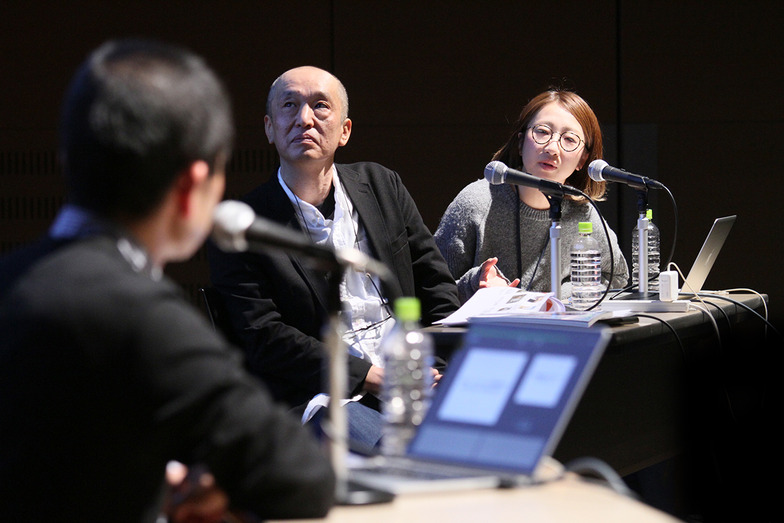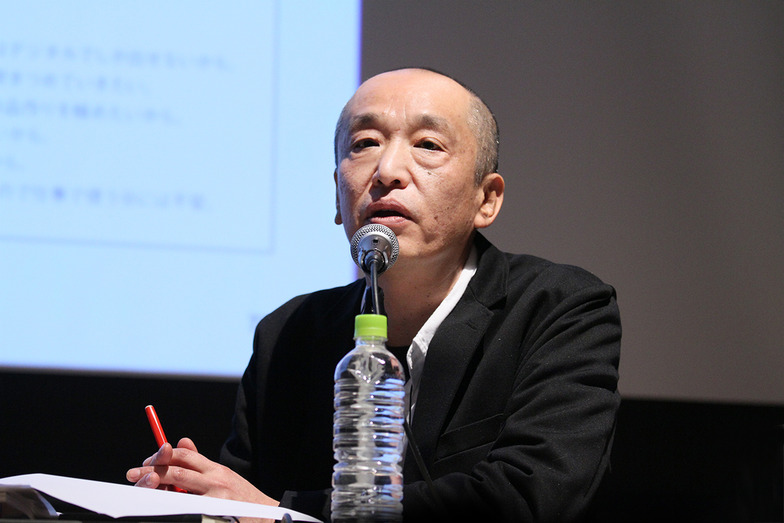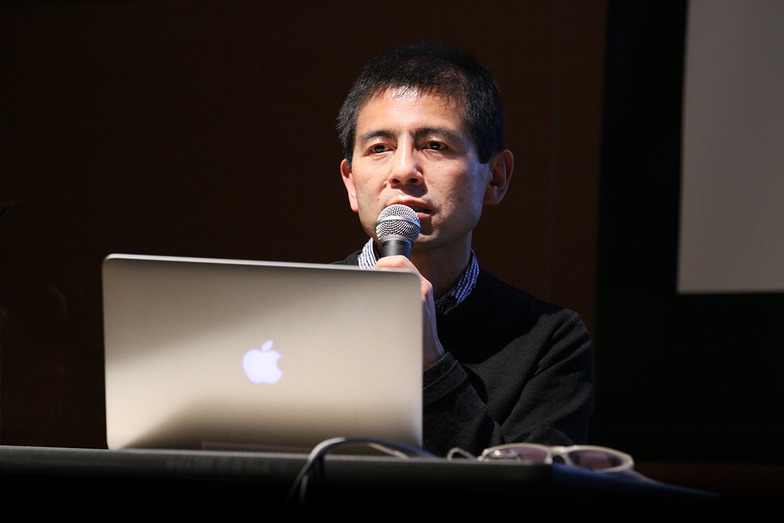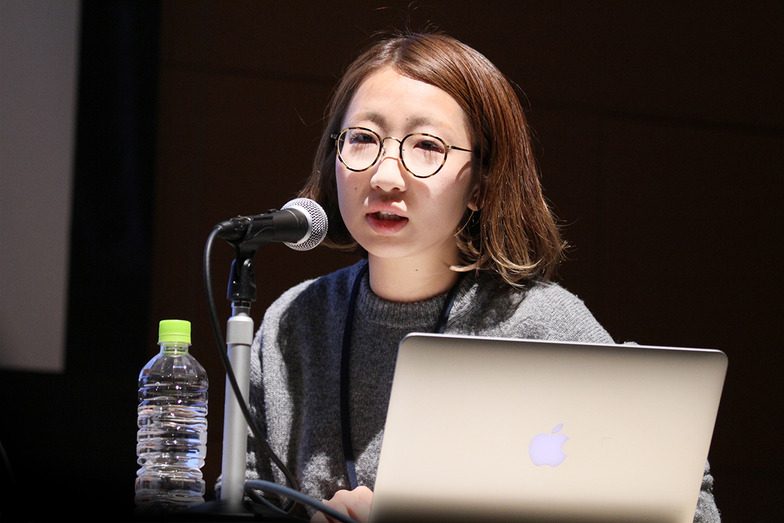This Dentsu Inc. Design Talk invites editor Masanobu Sugatsuke to provide an overview of the "present" surrounding photography. The talk session members are: Morihiro Harano, who founded "Mori" after working at Dentsu Inc., Drill Inc., and PARTY, and serves as a judge for global advertising awards; Kiyoshi Uematsu, Editor-in-Chief of the photography magazine "Commercial Photo"; and Yuri Uenishi, an Art Director at Dentsu Inc. with deep knowledge of photography, who won awards at Cannes, NYADC, D&AD, and One Show in 2016. Precisely because everyone takes photos today, we will critique photography from a professional perspective and discuss what it truly means to "see" a photograph.
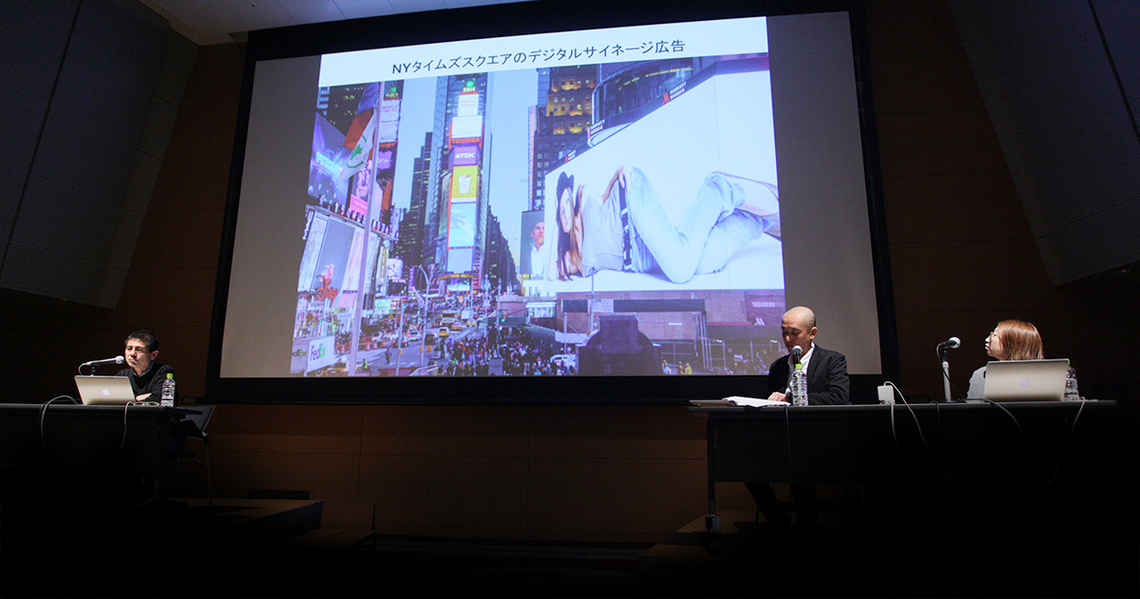
(From left) Editor Masanobu Sugatsuke, "Commercial Photo" Editor-in-Chief Kiyoshi Uematsu, Dentsu Inc.'s Yuri Uenishi
Is the appeal of fashion advertising that it's hard to understand?
Sugatsuke: Last fall, Balenciaga's advertising photos became a hot topic. They showed absolutely no clothing, only a small brand logo. They took over Tokyo's Omotesando Station, so some of you might have seen them.
This ad was created by photographer Mark Boswick, who also served as creative director. Why no clothes in a fashion brand campaign? Boswick stated, "We wanted to make advertising that wasn't advertising. Because advertising is something that irritates people."
This campaign doubled Balenciaga's sales compared to the previous year. It was a huge success as a campaign.
Uenishi: I really like this kind of provocative expression, almost like it's picking a fight. People who enjoy this aesthetic probably also like Balenciaga's clothes.
Sugatsuke: I also felt this campaign really conveyed Balenciaga's stance. What I've noticed with recent trends is that the appeal of fashion ads lies in "not being immediately obvious." Of course, being instantly recognizable is important for an ad, but I also think it's vital for things to not be fully understood at first glance.
Uematsu: Absolutely. With photos flooding the world like this, people stop looking the moment they recognize something as an ad. Just like Balenciaga's campaign, the more mysterious it is – the more people think "What is this?" – the more they want to look it up.
Uenishi: The visuals create that "hook" – making you stop in your tracks, making you remember it because it intrigued you, making your heart stir. That core aim feels timeless.
Uematsu: When people see photos in ads, most don't think, "Who took this photo?" But some are curious. They notice, "That's a beautiful photo," or "That's an interesting video," and start looking into it. Then, all sorts of information starts popping up online. This kind of mechanism might be what's becoming crucial.
For example, if someone finds Harano's "OK Go" video interesting and looks into it, they might discover it was actually shot with drones. The more people learn about it, the more fascinated they become, and they start sharing that information online. I think we're living in an era where the hidden layers of advertising photography are being revealed.
Sugatsuke: Most luxury fashion ads these days are made with searchability in mind, right? Publishing making-of videos and outtakes online is mainstream now, and campaigns are designed to include behind-the-scenes content.
Conversely, I believe that "anything anyone can understand isn't truly luxury." While I think things that anyone can understand hold important value, if everyone can grasp it, the people at the core of luxury feel it's "not for them." What do you think, Harano-san?
Harano: I see graphic expression as composed of a question mark and an exclamation mark, connected by an arrow: ?→!.
And I think the length of that arrow is where the skill of the advertiser really shines. If the arrow is very long, the expression is edgy but hard to grasp; if it's extremely short, it becomes easy to understand like Japanese commercials, but lacks depth.
In Western graphic ads, mastering that distance is crucial—too straightforward looks tacky, too complex confuses everyone. Finding that perfect distance has become a rule of the game.
In that sense, luxury brands likely want to appear more exclusive by extending that distance beyond standard advertising.
However, looking broadly at recent Western ads, while expressions with long arrow distances were common in the past, they are now steadily becoming shorter. This is undoubtedly due to the influence of social media; to be shareable, instant comprehension and clarity are necessary. Even judging at Cannes, while Western ads rarely featured celebrities in the past, they are increasing now. I feel that to that extent, the speed demanded of advertising has changed due to shifts in devices and the rise of social media, and expressions are being influenced accordingly.
What kind of photography is demanded in a mature society?
Sugatsuke: Photographers earning ¥100 million per job are thriving in New York. Why are they "¥100 million players"? Because they possess the intelligence to continuously pass intellectual tests and live accordingly. They shoot strategically and pour immense effort into their personal branding.
In Japan too, Parco is creating luxury-context advertising featuring graphic teams like M/M (Paris), as well as talked-about photographers like Dutch young female photographer Vivian Sassen and Jürgen Teller.
However, Japan still lacks photographers who can shoot within this luxury context.
Uenishi: As an art director working primarily in advertising, I often struggle with exclusive expressions. Of course, brands with inherent prestige, like high-end products or luxury labels, need to be presented appropriately.
But I also believe that truly great things should resonate with more people. So, I want to prioritize expressions that instantly move you or stir your heart upon first glance. It might sound counterintuitive, but I feel like doing that actually clears all the hurdles surprisingly well (laughs).
Sugatsuke: There's a quote by Yasumasa Morimura that I really love: "To reach the unseen world through the seen world." I think photography is the same.
Moreover, we're often told we live in a "mature society" these days. Hiroshi Tasaka, a professor at Tama University Graduate School, says that as society matures, intangible things like wisdom, trust, and culture become more important. In a mature society like ours, I believe photography that makes you sense what isn't actually captured in the frame is what constitutes "mature photography."
I want to be able to create, provide, and direct such work.
Uematsu: On the other hand, advertising involves clients who need their corporate philosophy represented. If a client demands "faster speed," the distance between arrows will keep shrinking, as Mr. Harano mentioned earlier.
If the request is to truly show the company's underlying philosophy, then even if the product is inexpensive, a luxury mindset is sometimes necessary. The world of advertising changes depending on what the client demands.
Harano: I think the perspective Sugatsuke-san mentioned – "how to create in a mature society" – is incredibly important. This applies not just to photographers, but to all creative fields, including advertising and TV programming.
Many companies and media fundamentally treat consumers like fools. While "simplicity is the ultimate sophistication" sounds noble, that's essentially what it boils down to. Only when we trust consumers' intelligence and adopt an attitude of genuine respect can we establish truly two-way, empathetic communication.
I think the level of respect we can set for consumers is precisely the attitude communicators should adopt in a mature society, as Mr. Sugatsuke mentioned.
Sugatsuke: I completely agree. I sincerely hope more people in Japan develop the ability to express themselves in ways that can communicate effectively to the world, tailored to a mature society.
We live in an era where our work and way of life are recorded online. Creators, not just photographers, become visible entities whether they like it or not.
That's why I've been saying for years now: to become a better creator, you have no choice but to "turn your life into a work of art." In other words, it means creating the work of "a better creator's life." I have a strong desire to help such people achieve that.
<End>
You can also read the interview here on AdTie!
Planning & Production: Dentsu Live Inc. Creative Unit Creative Room 2, Aki Kanahara









